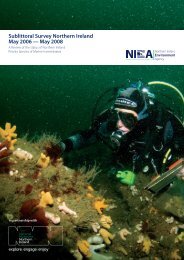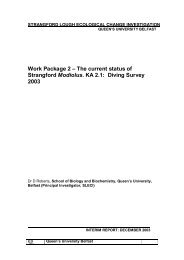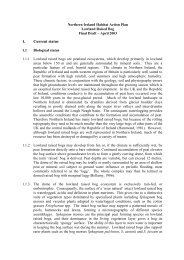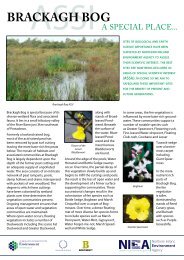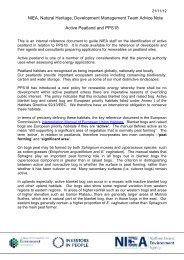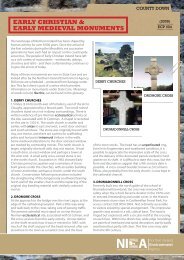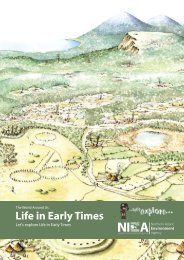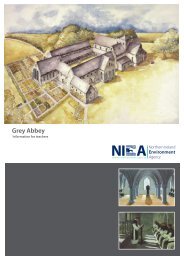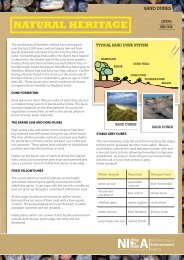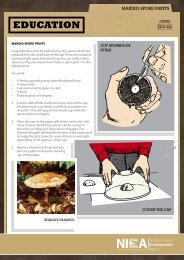Binevenagh Nature Reserve Information for Teachers (.PDF 0.97
Binevenagh Nature Reserve Information for Teachers (.PDF 0.97
Binevenagh Nature Reserve Information for Teachers (.PDF 0.97
Create successful ePaper yourself
Turn your PDF publications into a flip-book with our unique Google optimized e-Paper software.
<strong>Binevenagh</strong> <strong>Nature</strong> <strong>Reserve</strong><br />
St Aidan’s Church<br />
Your walk finishes where it began in the car park of St<br />
Aidan’s church. Obviously this place is not part of the<br />
<strong>Binevenagh</strong> <strong>Reserve</strong>, but it has a number of features<br />
worth exploring. There is a holy well in the church yard<br />
which probably was used long be<strong>for</strong>e Christian times.<br />
The church is named after St Aidan. He was a famous<br />
Irish Saint from this area and was a follower of St<br />
Columcille. Aidan left Ireland in the 7th century going<br />
first to Iona in Scotland but eventually ending his days<br />
off the north east coast of England. He became known<br />
as the ‘Apostle of Northumberland’. There was probably<br />
a church here from that time and the ruined church in<br />
the graveyard probably occupies the site of the original<br />
wooden church which would have been in existence<br />
in the late middle ages. The present day church was<br />
constructed in 1826. At this time the ‘Penal Laws’, which<br />
prevented Catholics from building churches, were<br />
relaxed. This would have been one of the first Catholic<br />
churches built in Ireland. Previous to that time the<br />
people would have celebrated mass at a ‘mass rock’<br />
high up near the <strong>Binevenagh</strong> cliffs. In the graveyard<br />
you will find a plaque dedicated to Dennis O’Hampsey.<br />
St Aidan’s Church Old And New<br />
9<br />
Dennis O’Hampsey<br />
www.ni-environment.gov.uk<br />
Dennis O’ Hampsey was a remarkable man in many ways<br />
not least because he lived so long. He was born in 1695<br />
and died in 1807 at the age of 112. He there<strong>for</strong>e lived<br />
in three centuries! Dennis was known as ‘The last of<br />
the Irish Bards’. He was born near Garvagh, but moved<br />
to Magilligan when he was very young. When he was<br />
three years old he contracted smallpox and was blind<br />
from that time. It would have been very difficult in those<br />
days to make a living with this disability. Dennis began<br />
a long apprenticeship as a harpist and obviously had<br />
sufficient talent to make his living as a musician <strong>for</strong> the<br />
rest of his long life.<br />
One hundred years be<strong>for</strong>e his birth there had been<br />
huge changes in Ireland. The ‘Plantation’ had seen the<br />
arrival of large numbers of settlers from England and<br />
Scotland. The old Irish chiefs lost their power and lands.<br />
These chiefs had many high ranking servants: lawyers,<br />
historians and musicians. These musicians were known<br />
as ‘bards’. They would have trained <strong>for</strong> years in their<br />
profession and would have been very rich compared<br />
with normal people. With the abrupt end of the old




